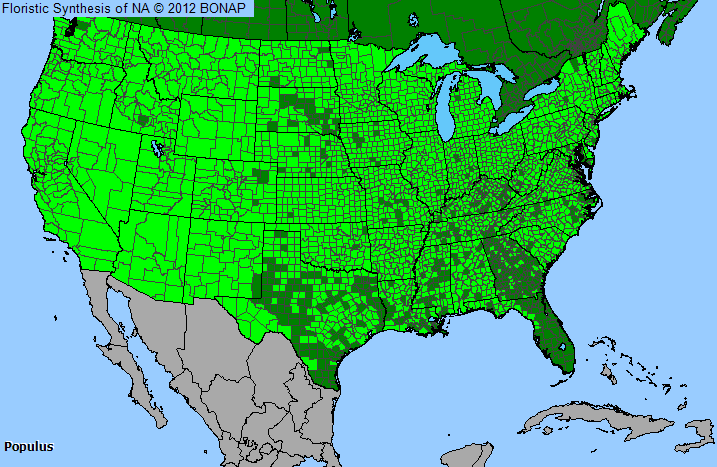
Plant Allergy Overview
Allergenicity
Moderate
Pollen Season
Winter Spring
Type
Tree
Sub-Type
Deciduous
Allergy Information
Pollen is considered moderately allergenic. In Minnesota and the southwest U.S., poplars are reported to be important causes of allergies. A common misconception is that the trees are pollinating when they release their "cotton fluff" into the air. This release comes after the trees have actually pollinated.
Genus Details
Poplars are fast-growing, weak-wooded trees that lack ornamental flowers and fruits. Many species are native to the U.S. and prefer moist soils. Quaking aspen is one of the most widely distributed trees in North America. The 9 important native species tend to be most frequent in the Great Lakes and Rocky Mountain regions. Some poplars grow more than 70 feet tall and the deciduous leaves are alternate, simple and usually have coarse toothed margins. The trees have a yellow fall color. Wind-pollinated flowers usually appear in the spring before leaves unfold during March to May. Trees have either male (staminate) or female (pistillate) flowers that are located in drooping catkins. When fruits mature, the capsules split open and release small seeds attached to silky hairs that assure wind dispersal. The cotton-ball appearance of the groups of seeds is responsible for the name cottonwood, which is applied to some species.
Pollen Description
Grains are prolate to subprolate or spheroidal; the amb triangular and 3(-4)-colpate. The sexine of the pollen grain is thin and granulate and the intine is thick.
Grains are 25-40 micrometers in diameter.
Genus Distribution

The shaded areas on the map indicates where the genus has been observed in the United States.
 - Native, observed in a county
- Native, observed in a county  - Introduced, observed in a county
- Introduced, observed in a county  - Rarely observed
- Rarely observedSpecies in Cottonwood, Poplar Genus
Allergens & Plants Search
Enter a full or partial species name to find more information on one of over 1,200 potentially allergenic plants.
For example, you can find chenopods searching on "cheno"


